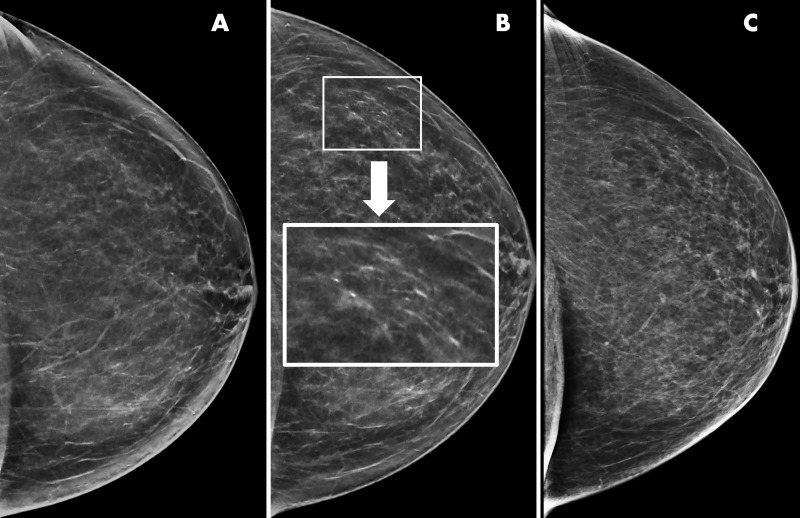Figure 1:
Example of artifactual pseudocalcifications on synthetic images in a 66-year-old woman who presented for screening. A, Screening mammogram obtained with synthetic imaging in 2019 (craniocaudal view). Finding was classified as Breast Imaging Reporting and Data System (BI-RADS) category 1. B, Screening mammogram obtained with synthetic imaging in 2020 (craniocaudal view). New calcifications in a linear distribution are seen in the outer breast. Finding was classified as BI-RADS category 0. Inset image was obtained at ×3 magnification. C, Diagnostic digital mammogram obtained in 2020 (craniocaudal view) reveals no calcifications in the outer breast. Previously seen calcification-like findings represent artifact from enhancement of ligaments or fibroglandular tissue on synthetic reconstruction. Finding was classified as BI-RADS category 1.

